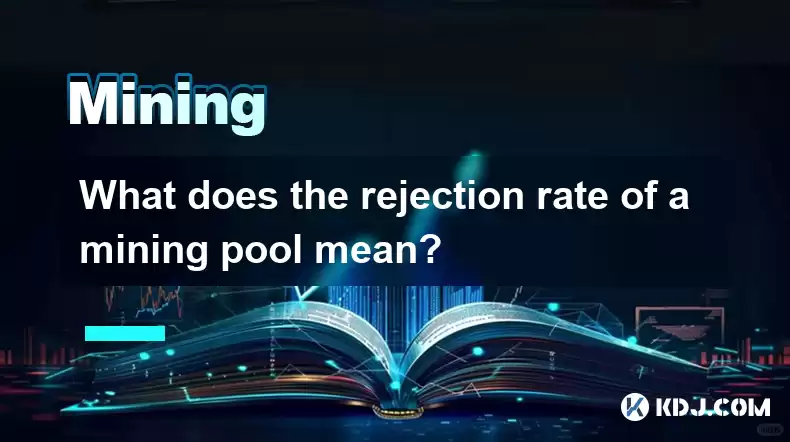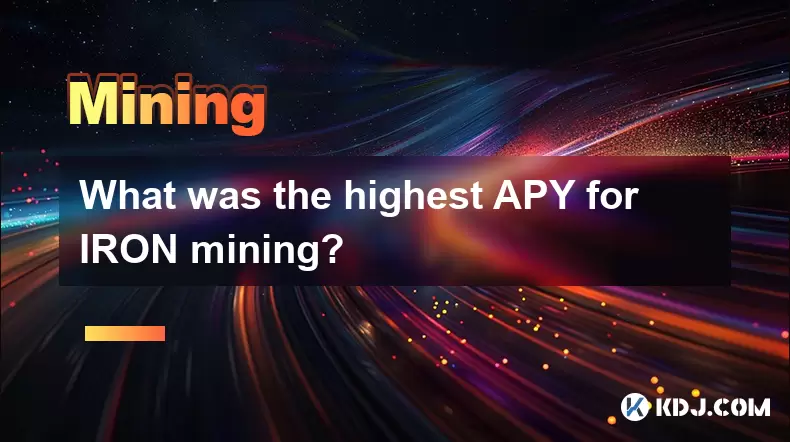-
 Bitcoin
Bitcoin $115000
0.12% -
 Ethereum
Ethereum $3701
4.50% -
 XRP
XRP $3.081
2.99% -
 Tether USDt
Tether USDt $0.0000
-0.01% -
 BNB
BNB $767.9
1.45% -
 Solana
Solana $169.5
3.13% -
 USDC
USDC $0.9999
0.01% -
 Dogecoin
Dogecoin $0.2106
4.30% -
 TRON
TRON $0.3334
1.62% -
 Cardano
Cardano $0.7564
2.54% -
 Stellar
Stellar $0.4165
0.76% -
 Hyperliquid
Hyperliquid $38.75
0.25% -
 Sui
Sui $3.593
3.00% -
 Chainlink
Chainlink $17.08
3.59% -
 Bitcoin Cash
Bitcoin Cash $573.6
4.35% -
 Hedera
Hedera $0.2508
-0.84% -
 Avalanche
Avalanche $23.07
6.46% -
 Ethena USDe
Ethena USDe $1.001
-0.02% -
 Litecoin
Litecoin $120.8
8.17% -
 UNUS SED LEO
UNUS SED LEO $8.943
-0.32% -
 Toncoin
Toncoin $3.400
-5.60% -
 Shiba Inu
Shiba Inu $0.00001255
1.54% -
 Uniswap
Uniswap $9.908
6.32% -
 Polkadot
Polkadot $3.718
2.10% -
 Monero
Monero $303.0
-0.74% -
 Dai
Dai $0.9999
-0.02% -
 Bitget Token
Bitget Token $4.392
0.91% -
 Cronos
Cronos $0.1403
6.31% -
 Pepe
Pepe $0.00001076
1.13% -
 Aave
Aave $267.2
1.80%
What does the rejection rate of a mining pool mean?
The rejection rate in mining pools, calculated by dividing rejected shares by total shares, impacts profitability; miners should monitor and minimize it for optimal performance.
Apr 10, 2025 at 06:49 pm

The rejection rate of a mining pool is a critical metric that miners need to understand and monitor to optimize their mining operations. The rejection rate refers to the percentage of submitted shares that a mining pool rejects. This rate is important because it directly impacts the efficiency and profitability of mining activities. In this article, we will delve into the meaning of the rejection rate, the factors that contribute to it, and how miners can minimize it to enhance their mining performance.
Understanding the Rejection Rate
The rejection rate is calculated by dividing the number of rejected shares by the total number of shares submitted to the mining pool. A share is a proof of work that a miner submits to the pool to demonstrate that they have performed the required computational work. When a miner's share is rejected, it means that the pool did not accept the work, and the miner does not receive credit for that effort. High rejection rates can significantly reduce a miner's earnings, as they are not compensated for the rejected shares.
Factors Contributing to High Rejection Rates
Several factors can contribute to a high rejection rate in a mining pool. One common cause is network latency, which occurs when there is a delay in the transmission of data between the miner and the pool server. If the miner submits a share that is outdated due to network delays, the pool may reject it. Another factor is the miner's hardware performance. If a miner's equipment is not functioning optimally, it may produce invalid shares that the pool rejects. Pool settings and configurations can also play a role; for instance, if the pool's difficulty setting is too high, it may lead to more rejections.
Impact of Rejection Rates on Mining Profitability
The rejection rate directly affects a miner's profitability. When a share is rejected, the miner does not receive any reward for the computational work performed. Over time, a high rejection rate can lead to significant losses in potential earnings. For example, if a miner has a rejection rate of 5%, they are essentially losing 5% of their potential revenue. Therefore, it is crucial for miners to monitor and minimize their rejection rates to maximize their profits.
How to Monitor Rejection Rates
Monitoring the rejection rate is essential for maintaining an efficient mining operation. Most mining pools provide detailed statistics and reports that include the rejection rate. Miners can access these reports through the pool's dashboard or user interface. It is recommended to check the rejection rate regularly, ideally on a daily basis, to quickly identify any issues and take corrective action. Some advanced mining software also offers real-time monitoring and alerts for high rejection rates, which can be very helpful for proactive management.
Strategies to Minimize Rejection Rates
There are several strategies that miners can employ to minimize their rejection rates and improve their mining efficiency. One effective approach is to optimize network connectivity. Miners should ensure that they have a stable and fast internet connection to reduce the likelihood of network latency issues. Using a mining pool that is geographically closer can also help reduce latency. Another strategy is to maintain and upgrade mining hardware. Regular maintenance and timely upgrades can ensure that the hardware is performing at its best, reducing the chances of producing invalid shares.
Adjusting pool settings can also have a significant impact on rejection rates. Miners should experiment with different difficulty settings to find the optimal balance that minimizes rejections while maintaining a steady stream of valid shares. Some pools offer features like variable difficulty, which can automatically adjust the difficulty based on the miner's performance, further reducing rejection rates. Additionally, using reliable and up-to-date mining software can help ensure that shares are formatted correctly and submitted efficiently, reducing the likelihood of rejections.
Case Studies: Real-World Examples of Rejection Rate Management
To illustrate the importance of managing rejection rates, let's look at a few real-world examples. In one case, a miner noticed a sudden spike in their rejection rate from 2% to 10%. Upon investigation, they discovered that their internet service provider was experiencing outages, leading to increased network latency. By switching to a more reliable ISP, the miner was able to bring their rejection rate back down to 2%. In another example, a mining operation was using outdated hardware, resulting in a high rejection rate of 8%. After upgrading their equipment, the rejection rate dropped to 3%, significantly improving their profitability.
Tools and Resources for Managing Rejection Rates
There are several tools and resources available to help miners manage and minimize their rejection rates. Mining software like CGMiner and EasyMiner often include features for monitoring and optimizing rejection rates. These tools can provide detailed insights into the performance of mining operations and suggest adjustments to improve efficiency. Online forums and communities, such as BitcoinTalk and Reddit's r/BitcoinMining, are valuable resources for miners to share experiences and solutions related to rejection rates. Additionally, many mining pools offer support and guidance on how to minimize rejection rates through their documentation and customer support channels.
Frequently Asked Questions
Q: Can a high rejection rate be caused by the mining pool itself?
A: Yes, a high rejection rate can sometimes be attributed to the mining pool's server performance or configuration. If multiple miners are experiencing high rejection rates with the same pool, it may indicate an issue with the pool's infrastructure. Miners should consider switching to a different pool if they suspect that the pool is the cause of their high rejection rates.
Q: Is it possible to have a rejection rate of 0%?
A: While it is theoretically possible to achieve a very low rejection rate, having a rejection rate of exactly 0% is highly unlikely. Even with optimal network conditions and hardware performance, occasional rejections can occur due to various factors such as pool server issues or minor network fluctuations. A rejection rate of less than 1% is generally considered excellent.
Q: How often should I check my rejection rate?
A: It is recommended to check your rejection rate at least once a day. Regular monitoring allows you to quickly identify any issues and take corrective action. Some miners prefer to check their rejection rate multiple times a day, especially if they are using advanced monitoring tools that provide real-time data.
Q: Can changing the mining algorithm affect the rejection rate?
A: Yes, changing the mining algorithm can impact the rejection rate. Different algorithms have different computational requirements and may be more or less susceptible to network latency and hardware performance issues. Miners should experiment with different algorithms to find the one that offers the best balance of efficiency and low rejection rates for their specific setup.
Disclaimer:info@kdj.com
The information provided is not trading advice. kdj.com does not assume any responsibility for any investments made based on the information provided in this article. Cryptocurrencies are highly volatile and it is highly recommended that you invest with caution after thorough research!
If you believe that the content used on this website infringes your copyright, please contact us immediately (info@kdj.com) and we will delete it promptly.
- Velo Universe, DEX, and DeFi Security: Navigating the Future of Decentralized Trading
- 2025-08-05 09:25:13
- Bitget Wallet Revolutionizes Solana with Gas-Free Transactions: A New Era for DeFi
- 2025-08-05 09:25:13
- Ozak AI, Crypto Boom, and ROI Potential: Is This the Next Big Thing?
- 2025-08-05 09:25:24
- Solana's ETF Hopes & the All-Time High Chase: Is SOL Set to Soar?
- 2025-08-05 09:25:24
- Coinbase's Brian Armstrong and the Art of Focused Work: A Deep Dive
- 2025-08-05 09:25:30
- Uniswap Price Prediction: Bullish Reversal on the Horizon?
- 2025-08-05 09:25:30
Related knowledge

What was the highest APY for IRON mining?
Jul 23,2025 at 05:14am
Understanding IRON Token and Its Mining MechanismThe IRON token is a stablecoin that operates within the Iron Finance ecosystem, primarily on blockcha...

What is impermanent loss in IRON pools?
Jul 23,2025 at 09:00am
Understanding Impermanent Loss in the Context of IRON PoolsImpermanent loss is a phenomenon that affects liquidity providers in decentralized finance ...

How to claim rewards from IRON mining?
Jul 23,2025 at 02:21pm
Understanding IRON Mining and Reward MechanismsIRON Finance operated as a decentralized finance (DeFi) protocol on the Polygon and Binance Smart Chain...

How to claim rewards from IRON mining?
Jul 29,2025 at 05:07am
Understanding IRON Mining and Reward MechanismIRON is a dual-token system designed to stabilize the value of a synthetic asset through a combination o...

IRON mining tutorial for beginners
Jul 27,2025 at 12:01am
What Is IRON and How Does It Work in the Cryptocurrency Ecosystem?IRON is a cryptocurrency token that operates on the Binance Smart Chain (BSC) and is...

How to calculate APY for IRON mining?
Jul 28,2025 at 09:49am
Understanding APY in the Context of IRON Token MiningWhen engaging in IRON token mining within decentralized finance (DeFi) platforms, Annual Percenta...

What was the highest APY for IRON mining?
Jul 23,2025 at 05:14am
Understanding IRON Token and Its Mining MechanismThe IRON token is a stablecoin that operates within the Iron Finance ecosystem, primarily on blockcha...

What is impermanent loss in IRON pools?
Jul 23,2025 at 09:00am
Understanding Impermanent Loss in the Context of IRON PoolsImpermanent loss is a phenomenon that affects liquidity providers in decentralized finance ...

How to claim rewards from IRON mining?
Jul 23,2025 at 02:21pm
Understanding IRON Mining and Reward MechanismsIRON Finance operated as a decentralized finance (DeFi) protocol on the Polygon and Binance Smart Chain...

How to claim rewards from IRON mining?
Jul 29,2025 at 05:07am
Understanding IRON Mining and Reward MechanismIRON is a dual-token system designed to stabilize the value of a synthetic asset through a combination o...

IRON mining tutorial for beginners
Jul 27,2025 at 12:01am
What Is IRON and How Does It Work in the Cryptocurrency Ecosystem?IRON is a cryptocurrency token that operates on the Binance Smart Chain (BSC) and is...

How to calculate APY for IRON mining?
Jul 28,2025 at 09:49am
Understanding APY in the Context of IRON Token MiningWhen engaging in IRON token mining within decentralized finance (DeFi) platforms, Annual Percenta...
See all articles

























































































